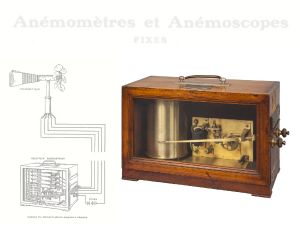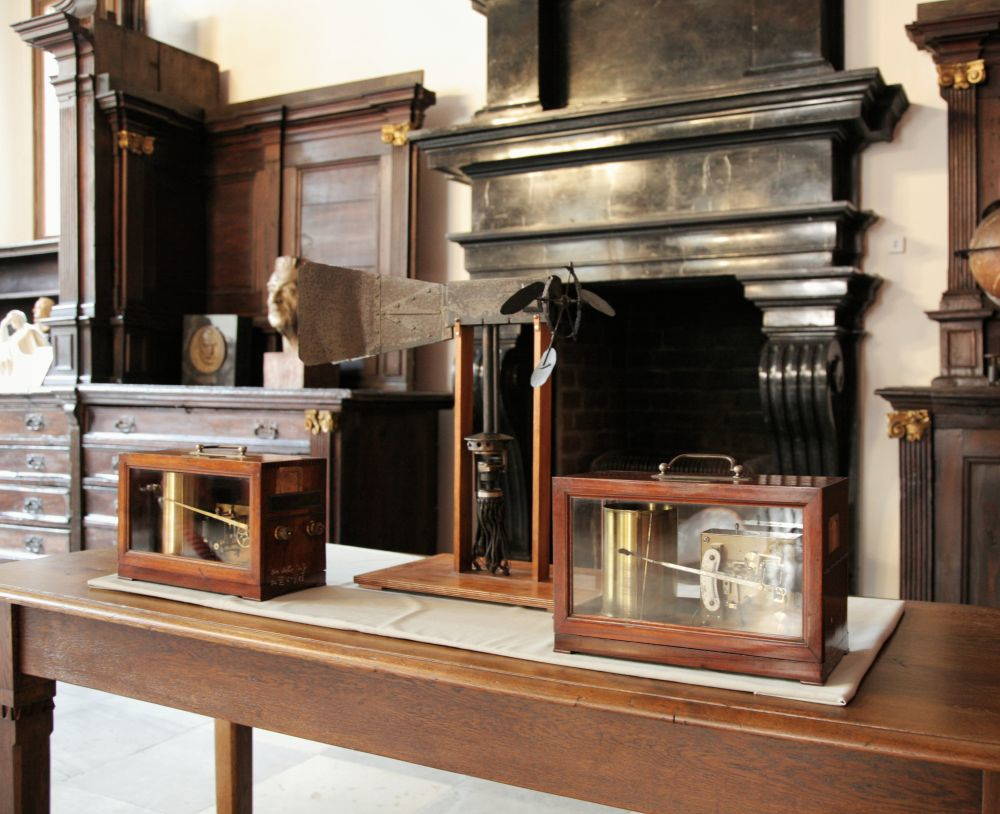
Exhibit of the Month is a series initiated by the Jagiellonian University Museum with the beginning of the new academic year. Each month we will explain the Museum collection to you, choosing a single exhibit or a group of exhibits which usually are not shown to the open public. This month's feature is an anemograph made by the Richard Frères company.
An anemograph made by Jules Richard's company, Paris 1910
The anemograph kit made to register wind direction and velocity was purchased in 1910 to be used in the Jagiellonian University’s Astronomical Observatory. The set consists of a sensor and two clockwork recorders wound up in a weekly cycle. They were kept on the second floor of the Collegium Śniadeckiego located near the Botanical Garden. The device was withdrawn from use after the malfunction of its detector and transferred to the JU Museum. Its central piece is a six-vane anemometer (damaged) with a directional rudder, otherwise known as the rumbometer — directional steering. It was mounted on the rooftop on the height of 21,2 m above the ground by the university technician Władysław Grodzicki (1864-1927). The measurement was conducted by transforming a wind blow into an electrical impulse transmitted by wire to the recorders.
The wind direction was measured as a discontinous value with 16 degrees, marked every second point of the compass and registered on special paper. One compass point makes 1/32 of the horizon, or 11¼ degree.
The wind velocity was registered following the principle used in tacheometres. The rotation of vanes induced an electric current in the armature of the alternating current generator, because the rotor movement caused a short circuit in the ring contact and released an impulse sent to the tacheometer.

The exhibit was made in the Richard family factory established by Félix Richard (1809-1876) and, following his death, managed by his sons: Jules Nicolas Richard (1848-1934) and Max-Felix Richarda (1856-1949) under the company name Richard Frères. Jules introduced measurement recorder into his company’s offer and they quickly became a standard part of the equipment used in meteorogical stations and outposts. Almost all European astronomical observatories used products of the company. In 1886, they were even installed on the top of the newly built Eiffel Tower. The company still exists under the official name Jules Richard Instruments using a JRI monogram as its logo and specialises in meteorogical equipment.
Dr Małgorzata Taborska

